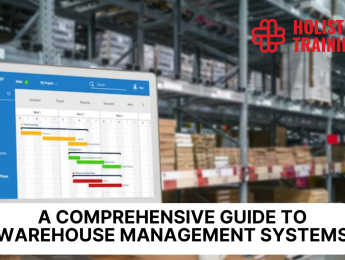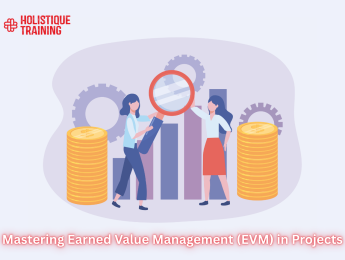- Table of Contents
- Introduction
- What Is Warehouse Management?
- Why Is Warehouse Management Important?
- Optimising Resource Utilisation
- Reducing Lead Times
- Minimising Errors
- Enhancing Customer Satisfaction
- Facilitating Scalability
- Cost Savings
- Meeting Compliance Requirements
- Supply Chain Resilience
- Strategic Decision-Making
- Principles of Warehouse Management
- 1- Organisation and Layout
- 2- Inventory Accuracy
- 3- Optimised Processes
- 4- Technology Integration
- 5- Workforce Training
- The Process of Warehouse Management
- 1- Receiving
- 2- Put-away
- 3- Order Picking
- 4- Packing
- 5- Shipping
- 6- Returns Handling
- 7- Reporting
- Warehouse Management Statistics
- What Is a Warehouse Management System?
- i) Real-time Inventory Tracking
- ii) Order Processing Optimisation
- iii) Task Management Efficiency
- iv) Reporting and Analytics Insight
- v) Seamless Integration with Other Systems
- vi) Customisation for Specific Needs
- The Benefits of Utilising a Warehouse Management System
- Enhanced Accuracy
- Improved Efficiency
- Cost Reduction
- Customer Satisfaction
- Scalability
- Strategic Decision-Making
- Compliance Assurance
- Supply Chain Resilience
- Examples of Warehouse Management Systems
- SAP EWM (Extended Warehouse Management)
- Oracle WMS Cloud
- Manhattan Associates WMS
- HighJump WMS
- How to Choose the Best Warehouse Management System for Your Organisation
- Scalability
- Integration Capabilities
- User-Friendly Interface
- Customisation
- Cost Considerations
- Reviews and References
- Future-Proofing
- Conclusion
Introduction
Warehouse management is the backbone of any successful supply chain, ensuring that goods flow seamlessly from production to distribution to the hands of the end consumer. It's a complex dance of logistics, technology, and organisation, and the key to mastering this intricate process lies in the effective implementation of Warehouse Management Systems (WMS). In this comprehensive guide, we'll delve into the world of warehouse management, exploring its importance, principles, processes, and the game-changing impact of WMS.
What Is Warehouse Management?
At its core, warehouse management involves the strategic coordination and optimisation of all activities within a warehouse. This includes everything from inventory management and order fulfilment to shipping and receiving. A well-executed warehouse management strategy can significantly enhance efficiency, reduce costs, and improve overall customer satisfaction.
Why Is Warehouse Management Important?
The importance of warehouse management cannot be overstated. In a globalised world where customers expect swift and accurate deliveries, efficient warehouse operations are crucial for a number of reasons:
Optimising Resource Utilisation
Warehouse management is the art of resource optimisation. A well-organised warehouse ensures that space, labour, and equipment are used to their fullest potential. This not only translates to cost savings but also allows businesses to make the most of their available resources, fostering a lean and efficient operation.
Reducing Lead Times
In the era of instant gratification, reducing lead times is paramount. Efficient warehouse management streamlines processes, from receiving goods to shipping them out, resulting in quicker turnarounds. This agility is a competitive advantage, especially in industries where rapid order fulfilment is a customer expectation.
Minimising Errors
Accuracy is the heartbeat of successful warehouse management. Mistakes, whether they be in inventory counts or order fulfilment, can be costly in terms of both finances and customer satisfaction. An organised warehouse, supported by robust management practices, significantly reduces the margin for errors, ensuring that customers receive exactly what they ordered when they expect it.
Enhancing Customer Satisfaction
The ultimate goal of any business is to satisfy its customers. Warehouse management, through its meticulous planning and execution, directly impacts the customer experience. Timely deliveries, accurate orders, and transparent tracking contribute to customer satisfaction, fostering loyalty and positive word-of-mouth.
Facilitating Scalability
As businesses grow, their operational needs evolve. A well-structured warehouse management system not only caters to current requirements but also provides the flexibility to scale operations seamlessly. This scalability is vital for businesses experiencing growth or adapting to changes in market demands.
Cost Savings
Efficient warehouse management is synonymous with cost-effectiveness. By minimising excess inventory, optimising storage, and streamlining processes, businesses can trim operational expenses. Additionally, accurate inventory management prevents overstock situations, reducing the financial burden of holding unnecessary goods.
Meeting Compliance Requirements
In industries subject to regulations and compliance standards, warehouse management plays a pivotal role in ensuring that all processes adhere to these requirements. This is particularly crucial in sectors like pharmaceuticals or food, where strict guidelines govern storage conditions and distribution.
Supply Chain Resilience
Warehouse management is integral to building a resilient supply chain. In the face of disruptions, whether caused by natural disasters, geopolitical events, or unexpected demand spikes, a well-managed warehouse can adapt swiftly, ensuring continuity and mitigating the impact of unforeseen challenges.
Strategic Decision-Making
Beyond the day-to-day operations, warehouse management provides valuable data and insights. Accurate and real-time information on inventory levels, order fulfilment rates, and operational efficiency empowers businesses to make informed strategic decisions, guiding them towards continuous improvement and long-term success.
In essence, warehouse management is the heartbeat of a dynamic supply chain. It's the meticulous conductor orchestrating the symphony of logistics, technology, and human resources. As businesses navigate the complex landscape of global commerce, the importance of effective warehouse management becomes not just a necessity but a strategic imperative for sustained growth and competitiveness.
Principles of Warehouse Management
Warehouse management, akin to a finely tuned orchestra, requires adherence to a set of fundamental principles to ensure the harmonious flow of goods and information. These principles serve as the guiding pillars for organisations seeking to optimise their warehouse operations and achieve peak efficiency.
1- Organisation and Layout
The foundation of effective warehouse management lies in a well-thought-out organisation and layout. This principle involves strategically placing products based on factors such as size, demand frequency, and storage requirements. A logical arrangement not only enhances accessibility but also facilitates faster order picking, reducing operational bottlenecks.
2- Inventory Accuracy
The mantra of "know thy inventory" resonates loudly in the realm of warehouse management. Maintaining accurate and up-to-date records of inventory levels is critical. Regular cycle counts, barcoding, and RFID technology play pivotal roles in ensuring that what's recorded in the system mirrors the actual stock on the shelves. This accuracy prevents stockouts, overstock situations, and the associated financial repercussions.
3- Optimised Processes
Streamlining warehouse processes is a continuous pursuit of efficiency. This principle involves evaluating and refining each step of the workflow, from receiving and put-away to order picking and shipping. By identifying and eliminating bottlenecks, redundancies, and inefficiencies, organisations can enhance overall productivity and reduce lead times.
4- Technology Integration
Embracing technology is not merely an option but a necessity in modern warehouse management. Barcoding, RFID, and warehouse management systems (WMS) contribute to theautomation of routine tasks, reducing human errors and providing real-time visibility into inventory movements. Technology integration enhances accuracy, speed, and the overall responsiveness of the warehouse.

5- Workforce Training
A knowledgeable and skilled workforce is the backbone of successful warehouse management.Training programs should not only cover the operation of technology but also instil a deep understanding of the organisation's processes and goals. Well-trained personnel contribute to smoother operations, fewer errors, and a heightened ability to adapt to changing circumstances.
These principles collectively form the bedrock of effective warehouse management. They are not standalone concepts but rather interwoven elements that, when executed in harmony, create an environment conducive to operational excellence. It's the meticulous adherence to these principles that transforms a warehouse from a mere storage facility into a dynamic hub of efficiency.
As organisations navigate the complexities of today's supply chains, embracing these principles becomes a strategic imperative. The ability to adapt, optimise, and synchronise warehouse operations with broader business objectives is what separates industry leaders from the rest. In the dance of logistics, these principles serve as the choreography, ensuring that every move contributes to a flawless performance.
The Process of Warehouse Management
Warehouse management is a holistic process that involves several interlinked steps:
1- Receiving
The journey of a product through the warehouse starts at the receiving dock. This initial step involves unloading incoming shipments, inspecting the contents for damage, and recording the received items in the inventory system. Attention to detail during this phase sets the stage for accurate inventory tracking and order fulfilment.
2- Put-away
Once items are received and inspected, they need to find their designated places within the warehouse. The put-away process involves systematically assigning storage locations based on various factors, including product size, weight, and demand. A well-organised put-away process optimises space utilisation and facilitates efficient order picking.
3- Order Picking
Order picking is the heartbeat of warehouse operations. It involves retrieving items from their designated storage locations to fulfil customer orders. Optimisation strategies, such as batch picking or zone picking, enhance efficiency by minimising the travel time of workers within the warehouse. Accuracy and speed in this phase are critical to meeting customer expectations.
4- Packing
The packing process involves carefully preparing products for shipment. It includes selecting appropriate packaging materials, securing items to prevent damage during transit, and labelling packages accurately. An organised and efficient packing process not only ensures the safe delivery of products but also contributes to a positive unboxing experience for the customer.
5- Shipping
Once packed, products move to the shipping area for dispatch. This phase involves coordinating with carriers, generating shipping labels, and ensuring timely departure. Real-time tracking systems provide visibility into the status of shipments, allowing for proactive communication with customers and resolving any issues that may arise during transit.
6- Returns Handling
The returns process is a crucial aspect of warehouse management. It involves inspecting returned items, determining their condition, and restocking them if possible. A well-defined returns handling process not only ensures customer satisfaction but also provides valuable insights into product quality and reasons for returns.
7- Reporting
Reporting is the often overlooked but indispensable process in warehouse management. This phase involves generating detailed reports and analytics to gain insights into warehouse performance, trends, and areas for improvement. Reporting facilitates informed decision-making, allowing organisations to identify bottlenecks, optimise workflows, and adapt strategies to meet evolving business needs.
Each of these processes is a link in the chain, and the strength of the chain is determined by the efficiency of each individual link. Integration and synchronisation across these processes are critical for the seamless functioning of the warehouse. Warehouse managers must not only focus on individual process optimisation but also ensure that each process aligns with the overarching goal of the warehouse – to meet customer demands in the most efficient and cost-effective manner.
Table 1: Warehouse Management Key Performance Indicators (KPIs)
Key Performance Indicators (KPIs) | Description | Measurement Unit |
Order Picking Accuracy | Ensure accuracy in fulfilling customer orders. | Percentage |
Inventory Turnover | Measure how efficiently inventory is utilised. | Times per year |
On-Time Shipping | Timely dispatch of orders to meet deadlines. | Percentage |
Warehouse Space Utilisation | Optimise storage to maximise space efficiency. | Percentage |
Return Rate Management | Effectively handle and minimise product returns. | Percentage |
In the pursuit of warehouse management excellence, monitoring these Key Performance Indicators (KPIs) is essential. They offer a snapshot of operational efficiency, accuracy, and customer satisfaction, guiding strategic decision-making for sustained success.
Warehouse Management Statistics
The exponential surge in global ecommerce, projected to surpass $29 trillion by 2023, is driving an unprecedented demand for warehouse space, according toOracle. As consumer expectations rise, U.S. warehouses are anticipated to require an additional 1 billion square feet by 2025. Simultaneously, the labor landscape is undergoing significant shifts, with warehousing employment reaching a record high of nearly 1.5 million jobs in 2021. However, the persistent challenge lies in the widening labor gap, compelling warehouses to strategically attract and retain top-tier talent amid this dynamic and expansive market, according toCBPS.
What Is a Warehouse Management System?
A Warehouse Management System (WMS) is a sophisticated software application designed to optimise and automate various warehouse operations. It acts as a central nervous system, coordinating and controlling the diverse activities within a warehouse. A WMS can help with the following:
i) Real-time Inventory Tracking
One of the primary capabilities of a Warehouse Management System is its prowess in real-time inventory tracking. Gone are the days of manual counts and guesswork. WMS provides a bird's-eye view of your entire inventory at any given moment. From the bustling shelves to the outbound trucks, every movement is tracked with precision, offering an unparalleled level of visibility into stock levels, locations, and fluctuations.
ii) Order Processing Optimisation
In the intricate dance of order processing, WMS takes the lead, orchestrating a symphony of efficiency. The system streamlines the entire order fulfilment process, from the moment an order is received to the final packaging stage. Through intelligent algorithms, it allocates tasks, optimises workflows, and ensures that orders move swiftly from initiation to dispatch, reducing lead times and enhancing overall customer satisfaction.
iii) Task Management Efficiency
Task management within a warehouse involves a myriad of activities, from picking and packing to restocking and returns processing. WMS acts as the conductor, assigning tasks to the workforce in the most efficient manner. Through real-time data analysis, the system ensures that each task is executed with precision, maximising the productivity of the workforce and minimising idle time.
iv) Reporting and Analytics Insight
A Warehouse Management System is not just a silent observer; it's a storyteller, narrating the tale of your warehouse's performance. Through comprehensive reporting and analytics tools, WMS transforms raw data into actionable insights. Managers gain a deep understanding of operational efficiency, identify bottlenecks, and unveil trends that shape strategicdecision-making. This data-driven approach propels the warehouse into a realm of continuous improvement.
v) Seamless Integration with Other Systems
In the interconnected web of modern business operations, a WMS stands as a bridge, seamlessly connecting with other essential systems. Integration with Enterprise Resource Planning (ERP), Transportation Management Systems (TMS), and other business applications ensures a synchronised and cohesive approach. This synergy eliminates silos, enhances communication, and fosters a holistic view of the entire supply chain.
vi) Customisation for Specific Needs
Warehouses, much like snowflakes, are unique in their structure and requirements. A robust WMS recognises this diversity and offers customisation options. Whether adapting to industry-specific workflows or accommodating the unique needs of an organisation, WMS can be tailored to ensure a snug fit. This adaptability is crucial for unleashing the full potential of the system in diverse operational environments.
In essence, a Warehouse Management System is the technological backbone that transforms a warehouse from a static storage space into a dynamic, responsive entity. It's the conductor, orchestrating a harmonious blend of inventory management, order processing, task management, and insightful analytics. Embracing a WMS is not just an upgrade; it's a paradigm shift toward a future where efficiency, accuracy, and adaptability are the defining elements of warehouse excellence. As the heartbeat of modern warehouse operations, a WMS is not just a tool; it's the catalyst for a new era of supply chain mastery.
The Benefits of Utilising a Warehouse Management System
An overwhelming 85% of warehouse operations are now adopting Warehouse Management Systems (WMS) to automate their processes, as revealed by theLogistics Management survey. Here’s why:
Enhanced Accuracy
At the core of a WMS lies the promise of precision. Manual errors, a persistent challenge in traditional warehouse management, are mitigated with the implementation of automated processes. Real-time inventory tracking, coupled with barcode and RFID technologies, ensures that what is recorded in the system mirrors the physical reality. This accuracy extends from the moment goods arrive at the warehouse to the point of dispatch, reducing the risk of errors that can prove costly in terms of both finances and customer satisfaction.
Improved Efficiency
Efficiency is the lifeblood of a thriving warehouse, and a WMS is the catalyst for operational streamlining. The system optimises workflows, from order processing to inventory management, reducing redundancies and delays. Automated task allocation ensures that each step in the process is executed with precision, minimising idle time and maximising workforce productivity. The result is a lean, agile operation that can respond swiftly to changing demands.
Cost Reduction
In the pursuit of operational excellence, cost reduction is a natural byproduct. A WMS contributes to cost savings on multiple fronts. Through accurate inventory management, organisations can minimise overstock situations and prevent stockouts, reducing excess holding costs. Operational efficiencies, from optimised task management to streamlined processes, translate into reduced labour costs. The overall result is a more cost-effective warehouse operation.
Customer Satisfaction
In an era where customer expectations are soaring, the ability to meet and exceed these expectations is a competitive advantage. A WMS plays a pivotal role in enhancing customer satisfaction. Swift order fulfilment, accurate deliveries, and real-time tracking contribute to a positive customer experience. The system empowers businesses to fulfil orders with unprecedented speed and accuracy, laying the foundation for customer loyalty and positive word-of-mouth.
Scalability
As businesses grow and evolve, their operational needs change. A WMS is designed with scalability in mind, ensuring that it can adapt to increased demand and evolving complexities. Whether handling a surge in orders or expanding warehouse facilities, a scalable WMS provides the flexibility needed to grow without compromising efficiency or incurring substantial additional costs.
Strategic Decision-Making
A WMS is not merely a tool for day-to-day operations; it's a strategic asset. The system generates detailed reports and analytics, offering valuable insights into warehouse performance, trends, and areas for improvement. Armed with this data, decision-makers can make informed choices that go beyond the warehouse floor, influencing broader business strategies and ensuring sustained growth.
Compliance Assurance
In industries subject to regulations and compliance standards, a WMS becomes a guardian of adherence. The system ensures that all warehouse processes align with regulatory requirements, from storage conditions to order fulfilment. This compliance assurance not only mitigates the risk of penalties but also instil confidence in customers and partners regarding the integrity of the supply chain.
Supply Chain Resilience
In an unpredictable world where disruptions are inevitable, supply chain resilience is a strategic imperative. A WMS, with its real-time visibility and adaptability, enhances the resilience of the supply chain. Whether facing natural disasters, geopolitical events, or unexpected demand spikes, the system enables warehouses to navigate challenges swiftly, ensuring continuity and minimising the impact of unforeseen disruptions.
In short, the benefits of utilising a Warehouse Management System extend far beyond the confines of the warehouse walls. It's a transformative technology that reshapes not only how goods are stored and moved but also how businesses navigate the complexities of a globalised market. As organisations strive for operational excellence, customer satisfaction, and strategic agility, a WMS emerges not just as a solution but as a key enabler of success in the dynamic landscape of modern commerce.
Examples of Warehouse Management Systems
Several Warehouse Management Systems dominate the market, each offering unique features tailored to specific business requirements. Some notable examples include:
SAP EWM (Extended Warehouse Management)
An integrated solution that extends the capabilities of the SAP Supply Chain Management suite.
Oracle WMS Cloud
A cloud-based solution offering real-time visibility and control over warehouse operations.
Manhattan Associates WMS
Known for its scalability, this system caters to a wide range of industries and business sizes.
HighJump WMS
Offers a comprehensive suite of tools for inventory management, order fulfilment, and warehouse optimisation.
How to Choose the Best Warehouse Management System for Your Organisation
Selecting the right WMS for your organisation is a critical decision that requires careful consideration. Here are some key factors to keep in mind:
Scalability
As your operations expand and the volume of inventory and orders increases, the chosen system should seamlessly accommodate this growth. Assess the scalability features of the WMS to ensure it can adapt to the evolving demands of your organisation without sacrificing performance or incurring exorbitant additional costs.
Integration Capabilities
Choose a system that seamlessly integrates with your existing technology stack, including ERP and TMS. A well-integrated system ensures a cohesive and synchronised approach across various facets of your business, eliminating data silos and enhancing overall efficiency.
User-Friendly Interface
A user-friendly interface is crucial for efficient implementation and training. Opt for a system that minimises the learning curve for your workforce, enabling them to harness the full potential of the WMS without undue complications.
Customisation
Warehouses come in all shapes and sizes, and their operational workflows can vary significantly. Choose a WMS that offers a degree of customisation to align with the specific needs of your organisation.
Cost Considerations
While the benefits of a WMS are substantial, it's essential to evaluate the total cost of ownership. Beyond the upfront costs, consider factors such as implementation, training, ongoing support, and any potential hidden expenses.
Reviews and References
Before committing to a WMS, delve into reviews and seek references from organisations that have already implemented the system. Real-world experiences provide valuable insights into the strengths, weaknesses, and performance of the WMS.
Future-Proofing
The technology landscape is dynamic, and a WMS that can adapt to emerging trends ensures future-proofing for your organisation. Consider the vendor's commitment to innovation, the frequency of software updates, and their track record in adapting to industry changes.
Conclusion
Mastering warehouse management is a multifaceted challenge that requires a strategic approach, careful planning, and the integration of cutting-edge technology. A Warehouse Management System is not just a tool; it's a catalyst for transformation, propelling your organisation into a new era of efficiency, accuracy, and customer satisfaction. As you embark on this journey, choosing the right WMS tailored to your unique needs will be the linchpin of your success. Elevate your expertise further by enrolling in our Advanced Warehouse Management course, where industry leaders share insights and strategies to take your warehouse operations to unprecedented heights. Enrol now and unlock the full potential of your warehouse management capabilities!
























